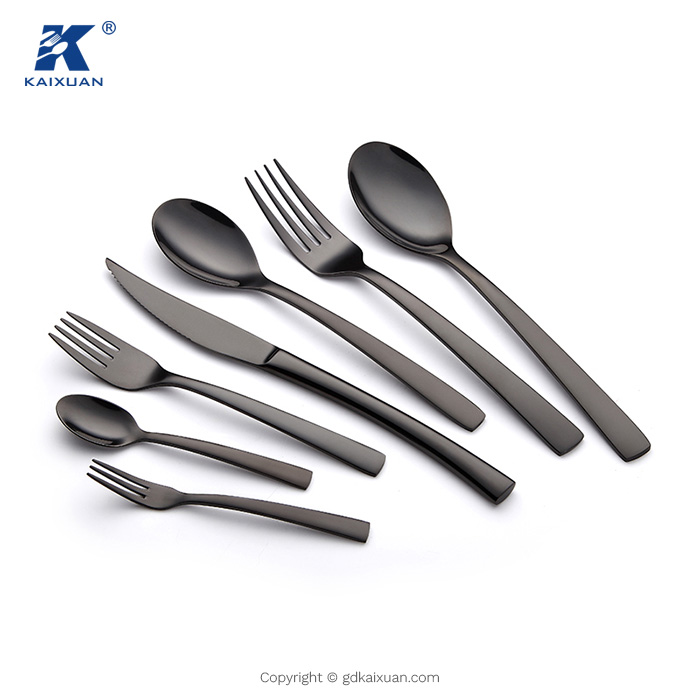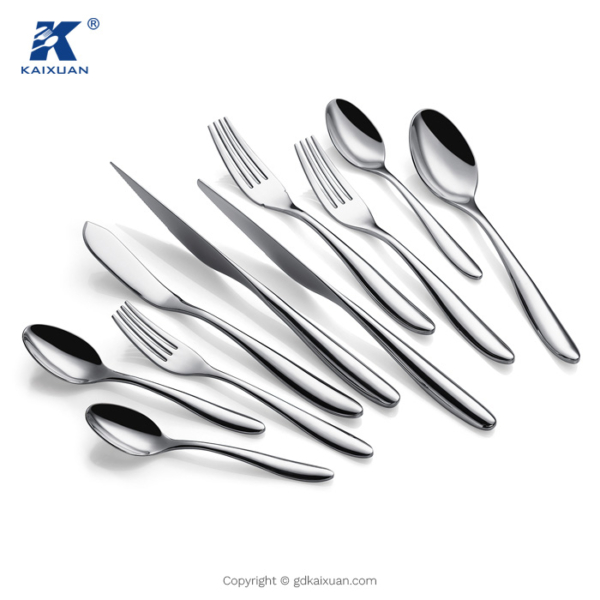Table of Contents:
- Introduction
- Understanding Stainless Steel Cutlery Blackening
- Effects of Oxidation on Stainless Steel
- Benefits of Using Vinegar for Cleaning
- Precautions When Using Vinegar on Stainless Steel
- Step-by-Step Guide to Remove Black from Stainless Steel Cutlery with Vinegar
- Alternative Cleaning Methods for Stubborn Stains
- Maintaining the Shine of Stainless Steel Cutlery
- Strategies to Prevent Future Blackening
- Polishing Stainless Steel for a Gleaming Finish
- Storage Tips to Preserve Stainless Steel Cutlery
- Ensuring Hygienic Practices
- Eco-Friendly Cleaning Solutions
- Conclusion
How do you remove black from stainless steel cutlery?
When blackening occurs on your stainless steel cutlery, it can be concerning. In this blog post, we delve into effective methods to remove black stains from stainless steel cutlery, focusing on using vinegar as a powerful cleaning agent. Discover how this common household item can restore the luster of your stainless steel utensils and keep them looking pristine.
Introduction
Stainless steel cutlery is valued for its durability and aesthetic appeal. However, over time, these utensils may develop black stains or tarnish that diminish their appearance. Understanding how to effectively remove black marks from stainless steel cutlery is essential for maintaining their shine and longevity. In this guide, we explore the use of vinegar as a cleaning solution to tackle black stains on stainless steel.
Understanding Stainless Steel Cutlery Blackening
The blackening of stainless steel cutlery is often the result of oxidation, a chemical process where the metal reacts with oxygen or other substances in the environment. This reaction can lead to the formation of black stains or tarnish on the surface of the stainless steel, detracting from its visual appeal. By understanding the causes of blackening, you can implement appropriate cleaning techniques to restore the stainless steel to its original state.
Effects of Oxidation on Stainless Steel
Oxidation can compromise the integrity and appearance of stainless steel cutlery, causing it to lose its shine and develop unsightly black marks. While oxidation does not typically affect the structural strength of stainless steel, it can impact the aesthetic quality of the utensils. Removing oxidation from stainless steel is crucial for preserving its visual appeal and ensuring that it remains functional and attractive.
Benefits of Using Vinegar for Cleaning
Vinegar is a versatile and cost-effective cleaning agent that offers numerous benefits for cleaning stainless steel cutlery. The acidic nature of vinegar helps dissolve stains, rust, and oxidation from metal surfaces, including stainless steel. By using vinegar as a cleaning solution, you can effectively remove black stains from stainless steel cutlery without causing damage to the metal. Additionally, vinegar is an eco-friendly alternative to harsh chemical cleaners, making it a preferred choice for environmentally conscious individuals.
Precautions When Using Vinegar on Stainless Steel
While vinegar is an effective cleaning agent for stainless steel, it is essential to exercise caution to prevent damage to the metal. Avoid leaving vinegar on the stainless steel surface for an extended period, as prolonged exposure to acid can potentially corrode the metal. Always dilute vinegar with water before use to reduce its acidity and minimize the risk of etching or discoloration. Additionally, test the vinegar solution on a small, inconspicuous area of the cutlery before applying it to the entire surface to ensure compatibility.
Step-by-Step Guide to Remove Black from Stainless Steel Cutlery with Vinegar
-
Preparation: Mix equal parts of white vinegar and water in a bowl or spray bottle to create a cleaning solution.
-
Application: Apply the vinegar solution to the blackened areas of the stainless steel cutlery using a soft cloth or sponge.
-
Soaking: Allow the vinegar solution to sit on the stains for a few minutes to dissolve the black marks.
-
Scrubbing: Gently scrub the blackened areas with a non-abrasive sponge or brush to loosen the stains.
-
Rinsing: Rinse the cutlery thoroughly with water to remove the vinegar solution and loosened residue.
-
Drying: Dry the stainless steel cutlery with a clean, dry cloth to prevent water spots and restore its shine.
Alternative Cleaning Methods for Stubborn Stains
For stubborn black stains on stainless steel cutlery, alternative cleaning methods can be employed to effectively remove the discoloration. Consider using specialized stainless steel cleaners, baking soda paste, lemon juice, or commercial metal polishes to tackle persistent black marks. These alternative cleaning solutions can provide additional cleaning power and help restore the stainless steel cutlery to its original condition.
Maintaining the Shine of Stainless Steel Cutlery
Regular maintenance is key to preserving the shine and appearance of stainless steel cutlery. After removing black stains, polish the stainless steel utensils with a soft cloth and stainless steel polish to enhance their luster. Avoid abrasive cleaners, steel wool, or harsh chemicals that can scratch or damage the metal surface. By incorporating routine cleaning and polishing into your kitchen maintenance, you can keep your stainless steel cutlery looking new and radiant.
Strategies to Prevent Future Blackening
To prevent future black stains on stainless steel cutlery, adopt preventative measures to minimize oxidation and tarnishing. Store the cutlery in a dry, well-ventilated environment to avoid exposure to moisture and humidity, which can accelerate oxidation. Use protective sleeves or storage containers to shield the cutlery from scratches and abrasions. Regularly clean and dry the utensils after use to maintain their pristine appearance and prevent blackening.
Polishing Stainless Steel for a Gleaming Finish
Polishing stainless steel cutlery is an effective way to restore its shine and brilliance. Utilize a soft cloth and stainless steel polish to buff the utensils in circular motions, focusing on areas with black stains or tarnish. Regular polishing can help remove minor imperfections and enhance the overall appearance of the stainless steel cutlery. By incorporating polishing into your cleaning routine, you can achieve a gleaming finish that showcases the beauty of the metal.
Storage Tips to Preserve Stainless Steel Cutlery
Proper storage is essential for preserving the quality and appearance of stainless steel cutlery. Store the utensils in designated compartments or drawer organizers to prevent scratching and ensure they remain organized. Avoid storing the cutlery in damp or humid conditions, as moisture can promote oxidation and tarnishing. By implementing proper storage practices, you can prolong the lifespan of your stainless steel cutlery and maintain its visual appeal.
Ensuring Hygienic Practices
Maintaining hygienic practices when handling stainless steel cutlery is essential for food safety and cleanliness. Regularly sanitize the utensils with hot water and mild soap to eliminate germs and bacteria. Ensure thorough cleaning of the cutlery after each use to remove food residue and prevent contamination. By prioritizing hygiene and sanitation, you can enjoy using your stainless steel cutlery with confidence and peace of mind.
Eco-Friendly Cleaning Solutions
For environmentally conscious individuals, eco-friendly cleaning solutions offer a sustainable alternative to conventional chemical cleaners. In addition to using vinegar for cleaning stainless steel cutlery, consider integrating natural cleaning agents such as baking soda, lemon juice, or hydrogen peroxide into your cleaning routine. These eco-friendly options are effective at removing stains and maintaining the cleanliness of stainless steel cutlery without harming the environment.
Conclusion
In conclusion, removing black stains from stainless steel cutlery requires careful attention and the right cleaning techniques. By leveraging the cleaning power of vinegar and following the step-by-step guide provided in this article, you can effectively eliminate black marks and restore the luster of your stainless steel utensils. Remember to exercise caution when using vinegar on stainless steel and implement preventive measures to minimize future blackening. With proper care and maintenance, your stainless steel cutlery can maintain its beauty and functionality for years to come.











